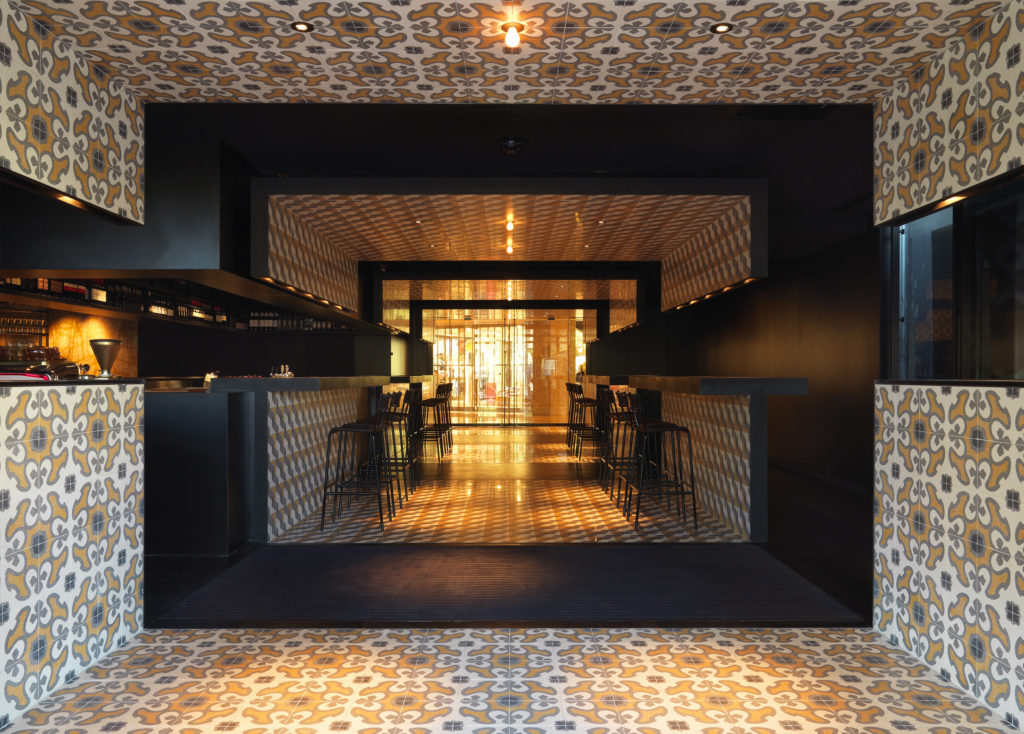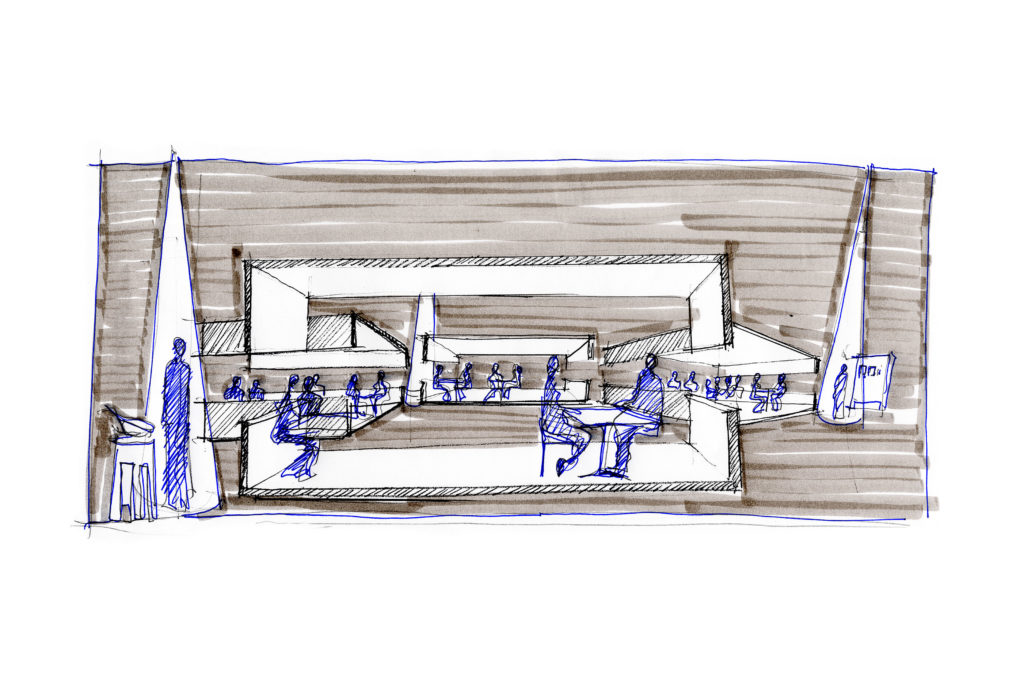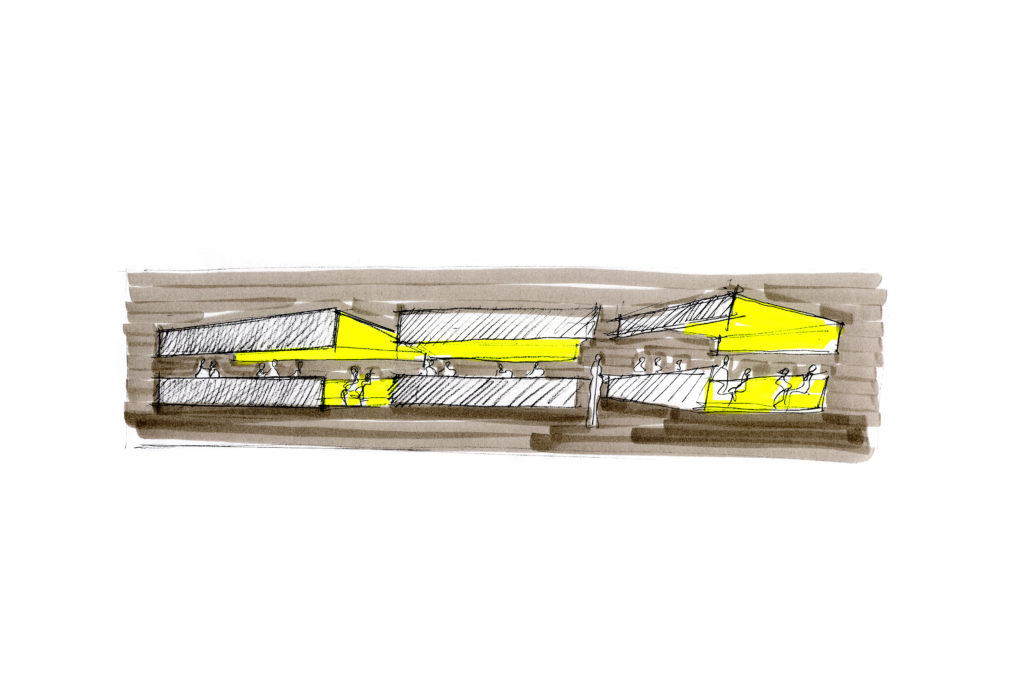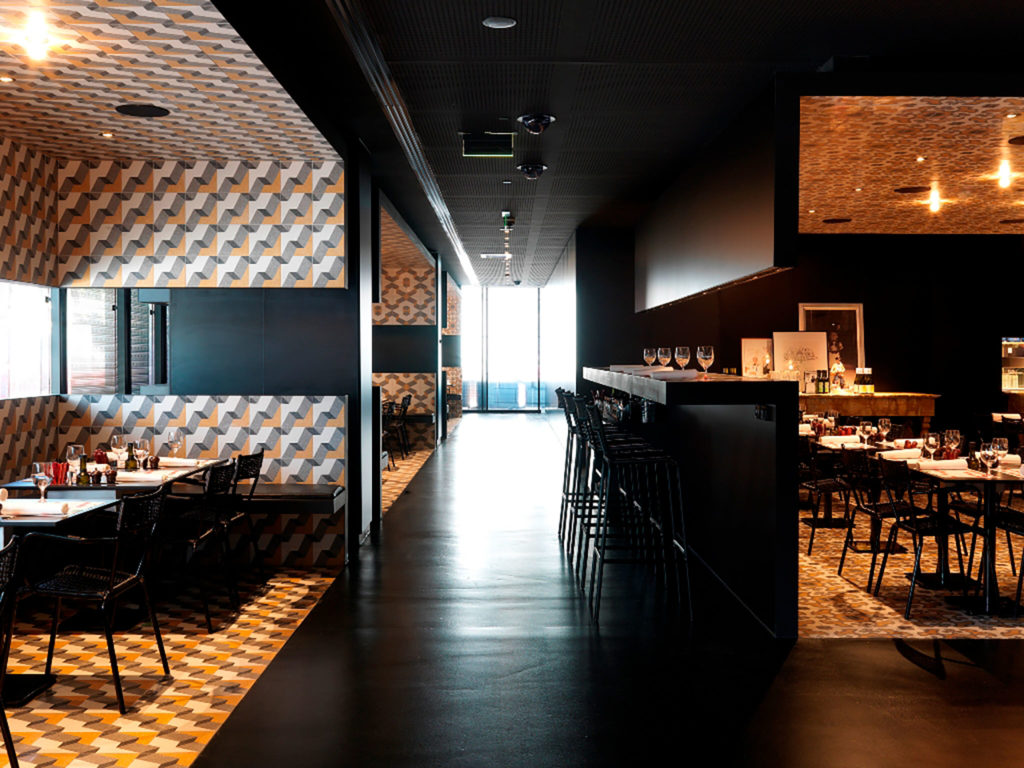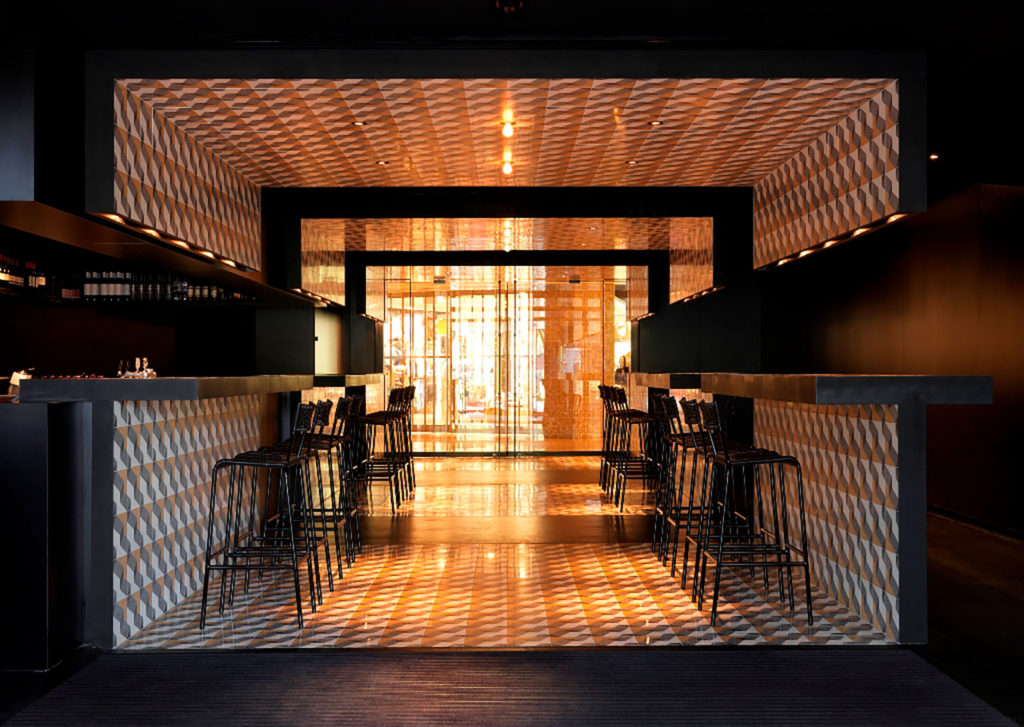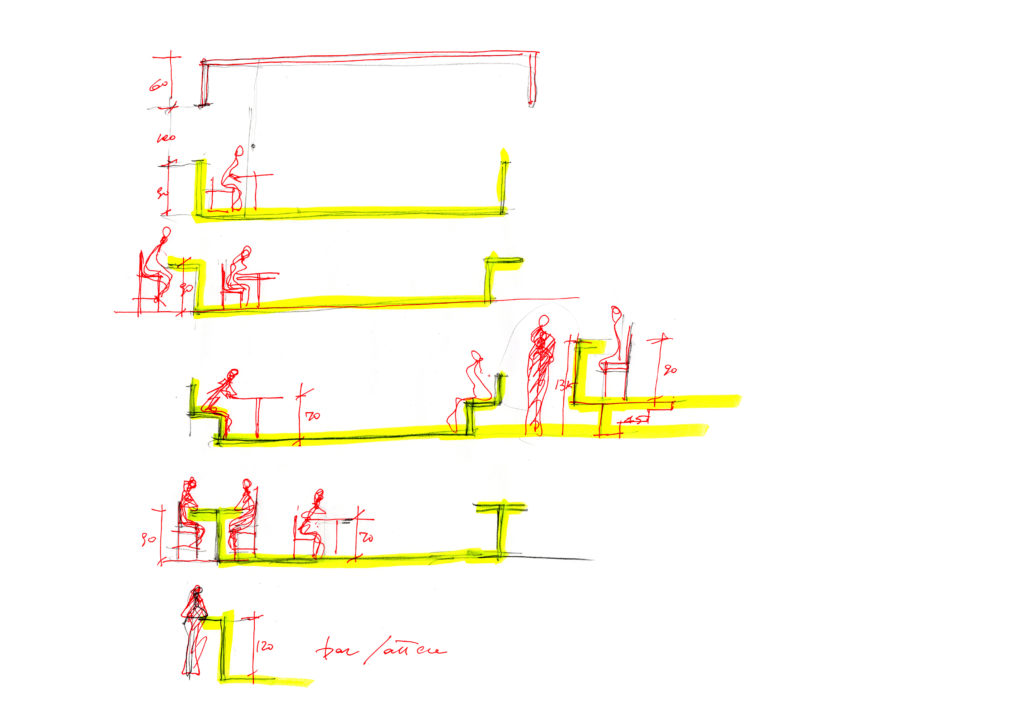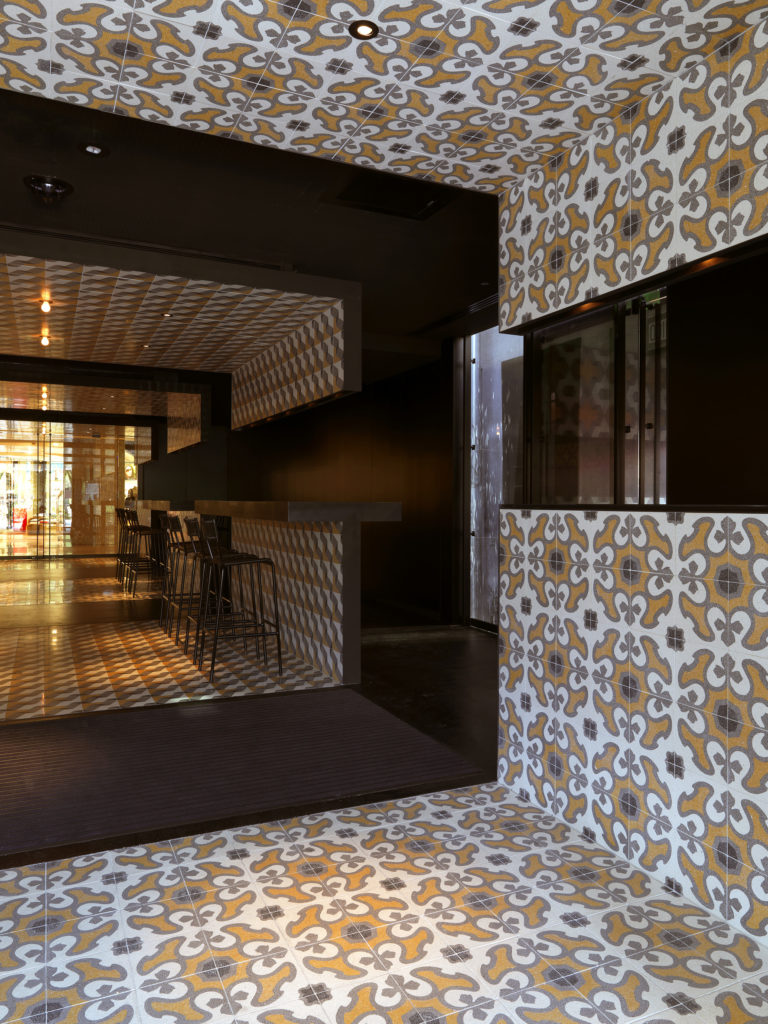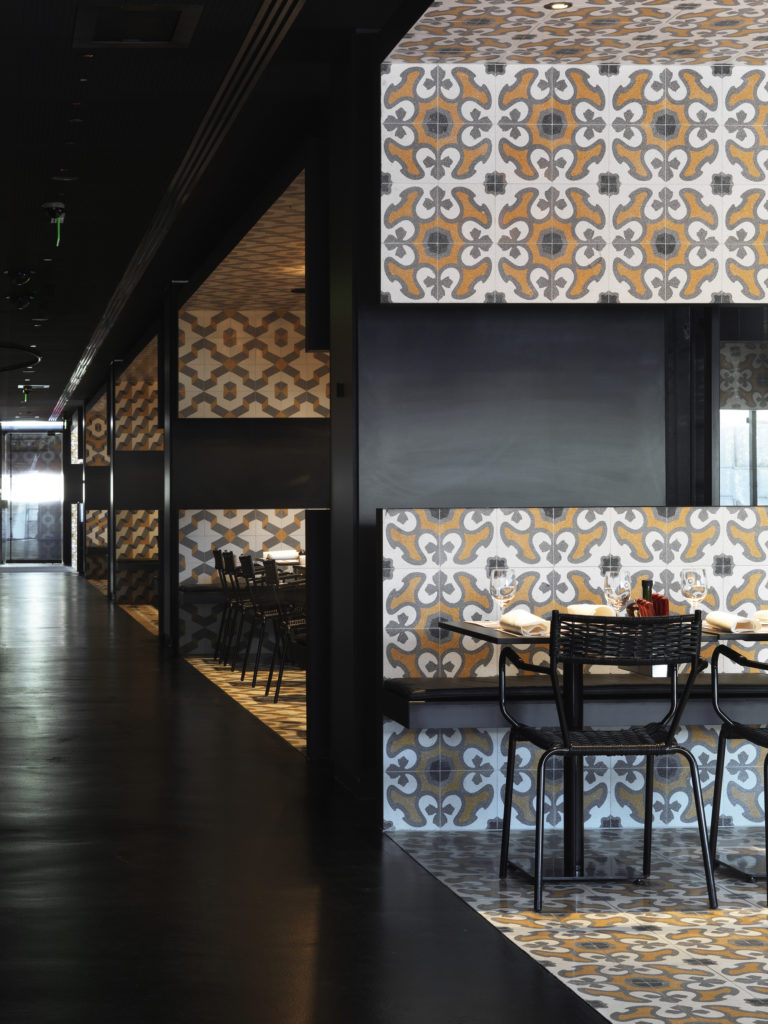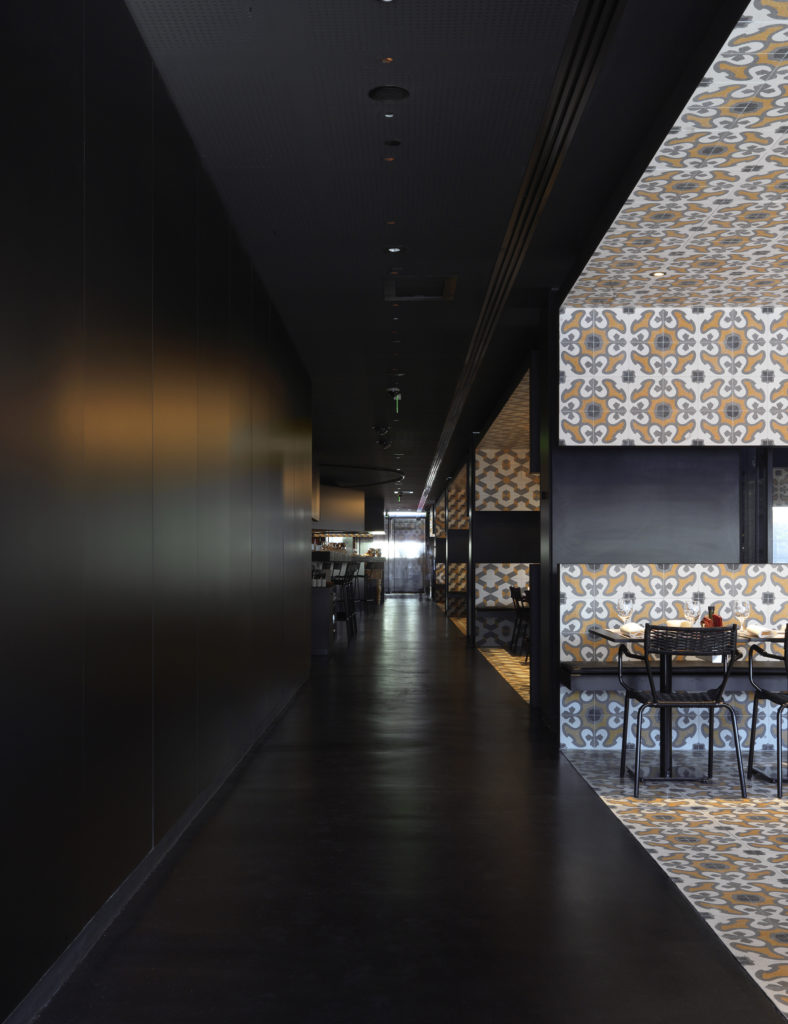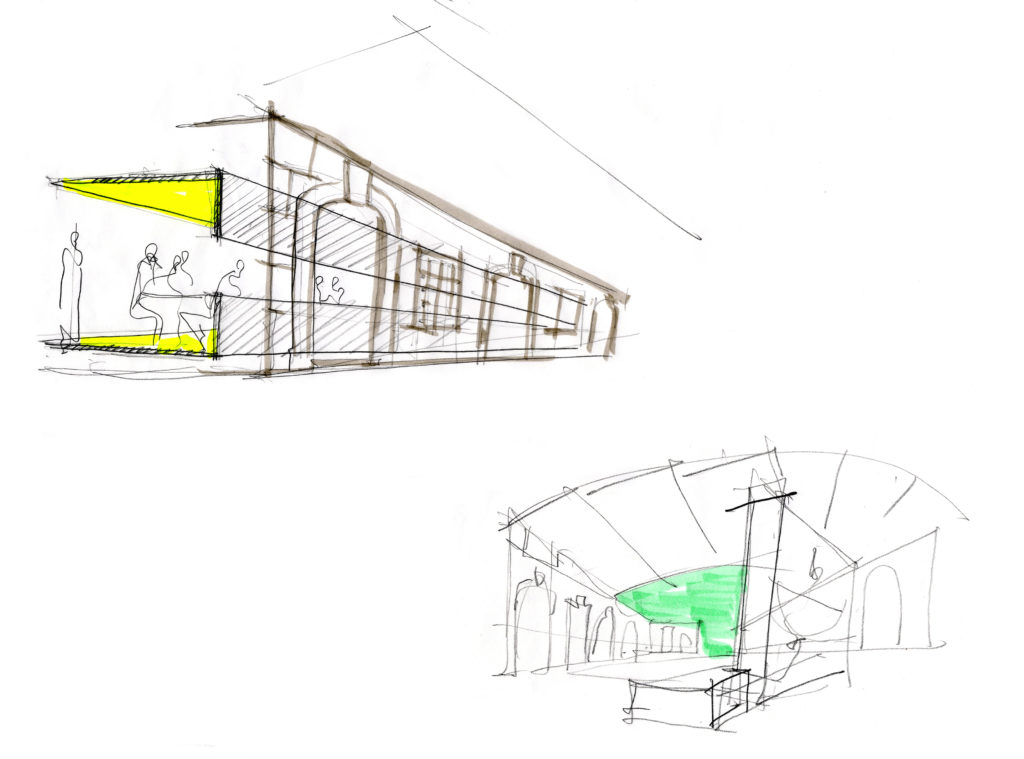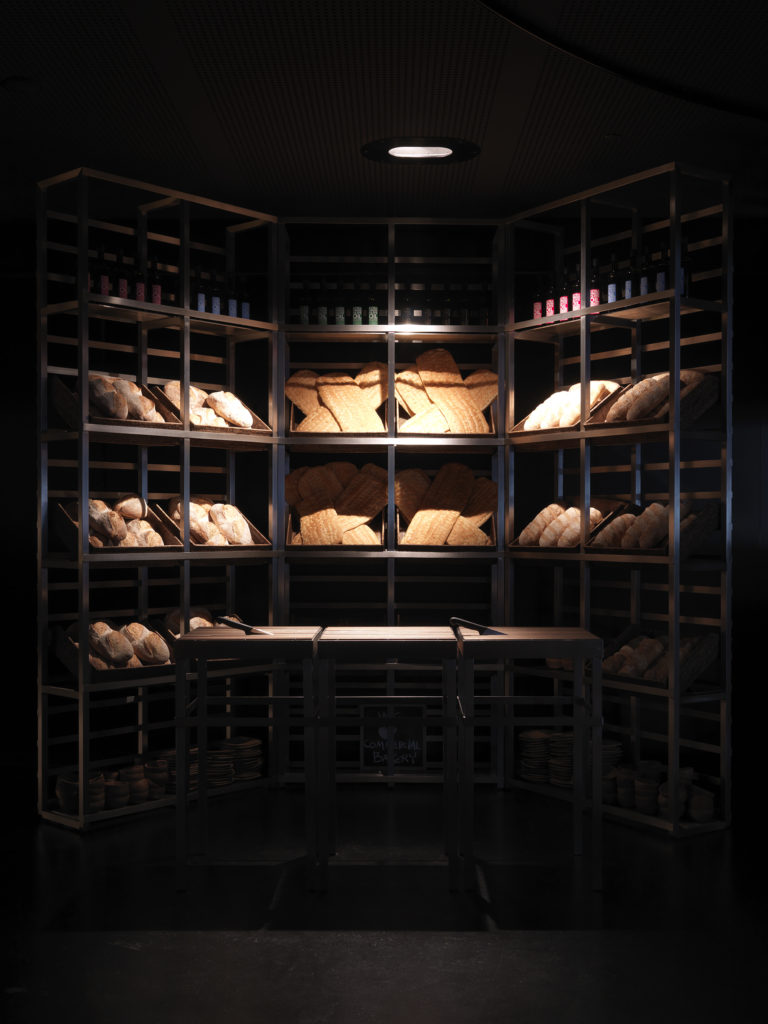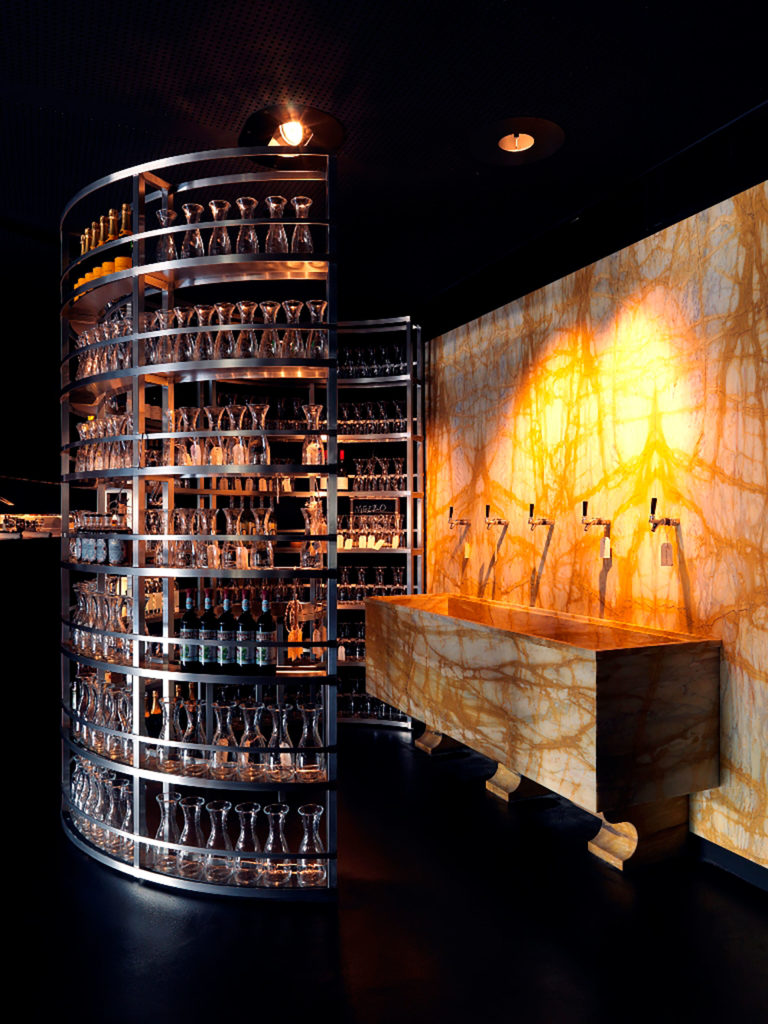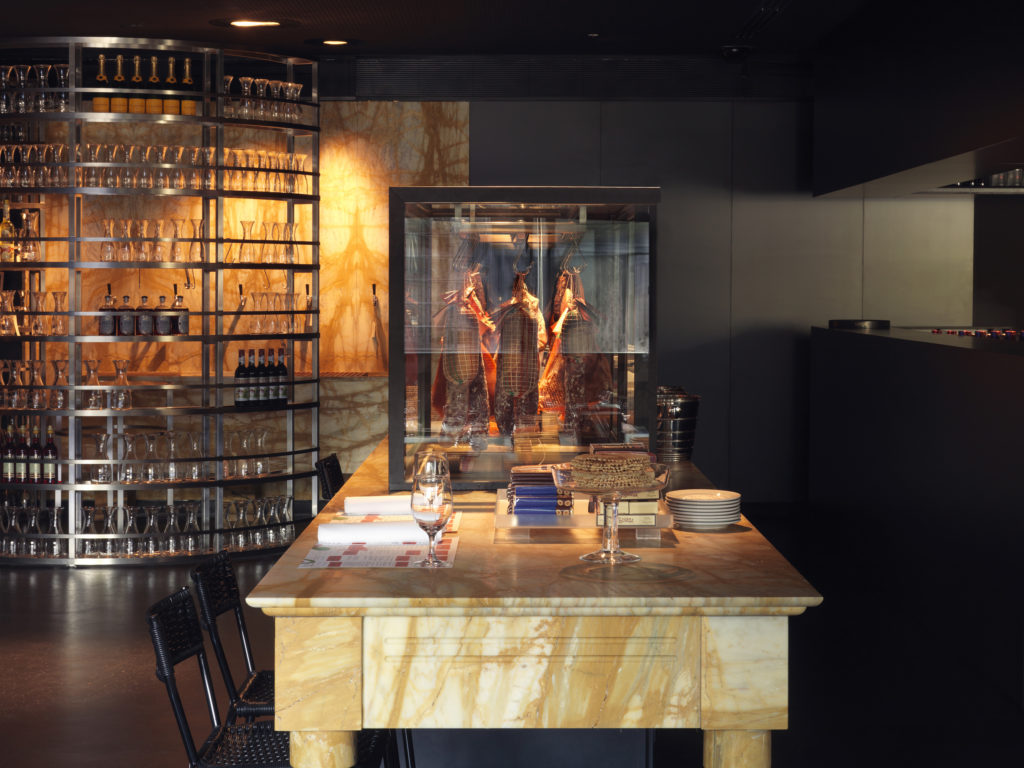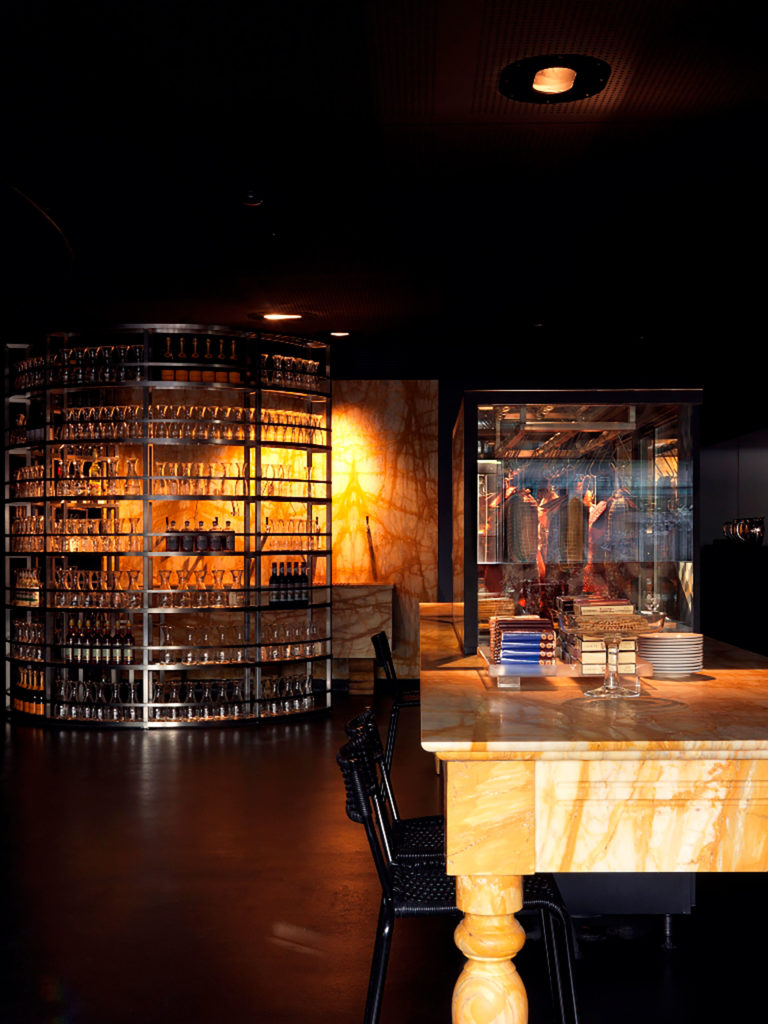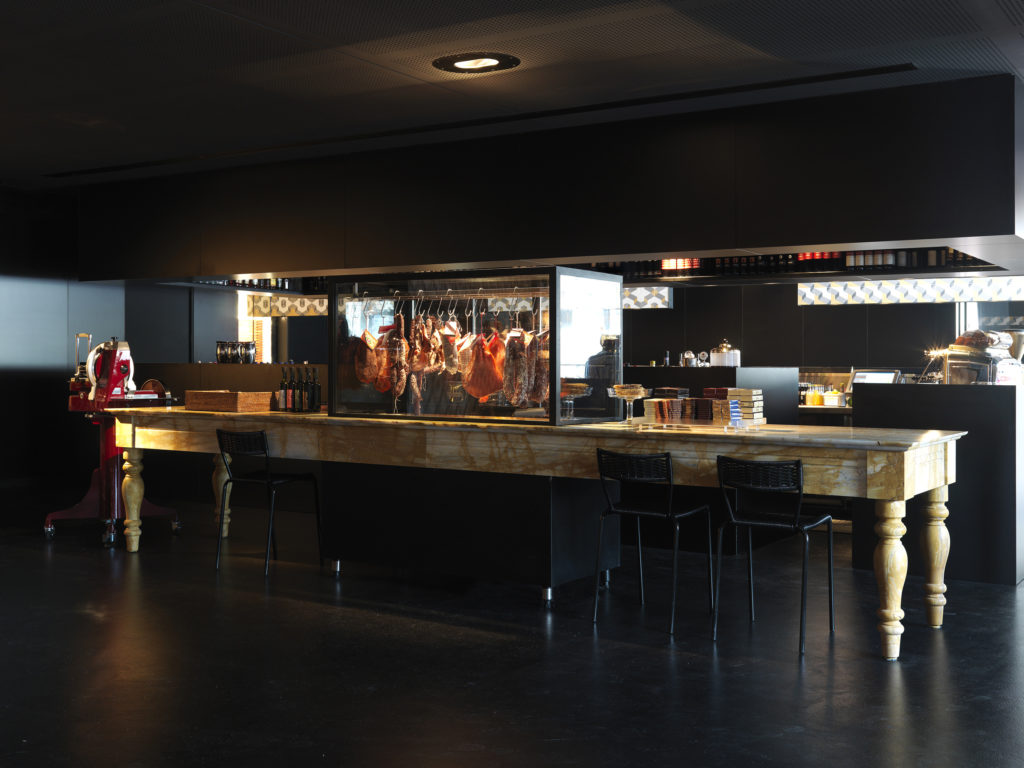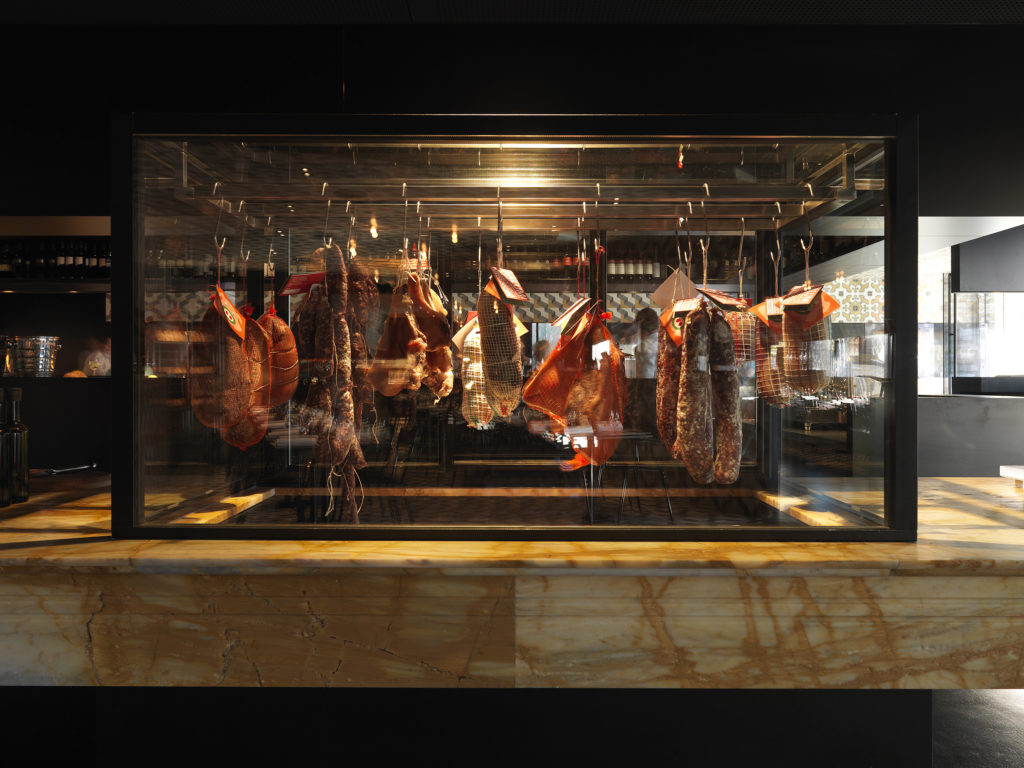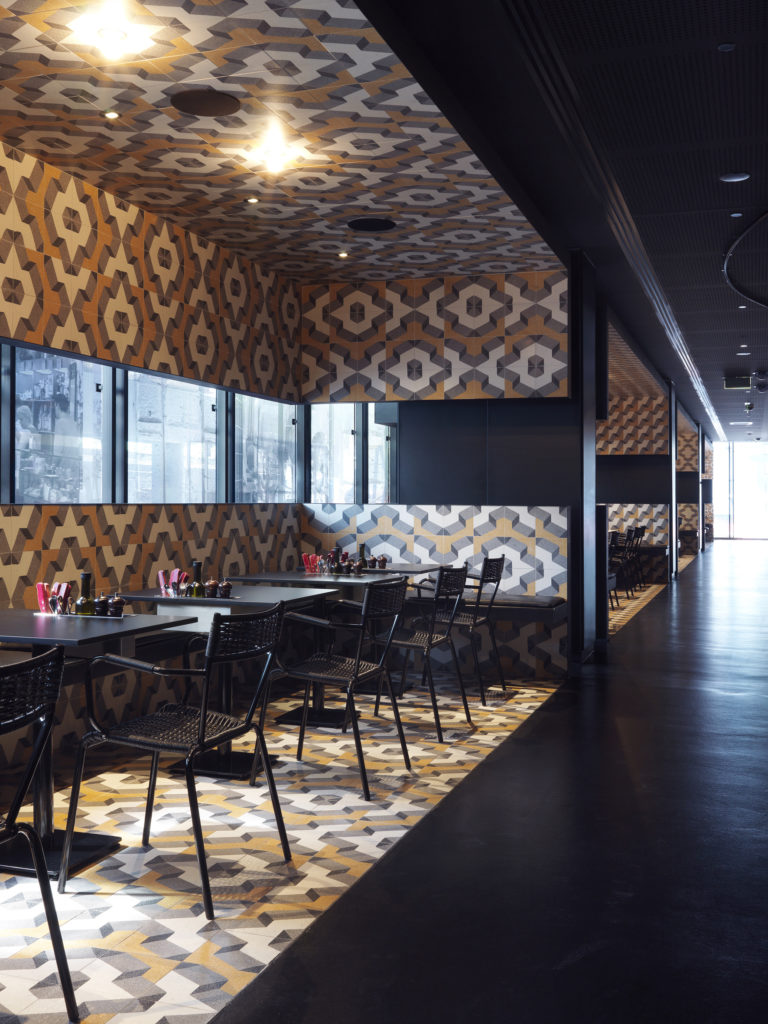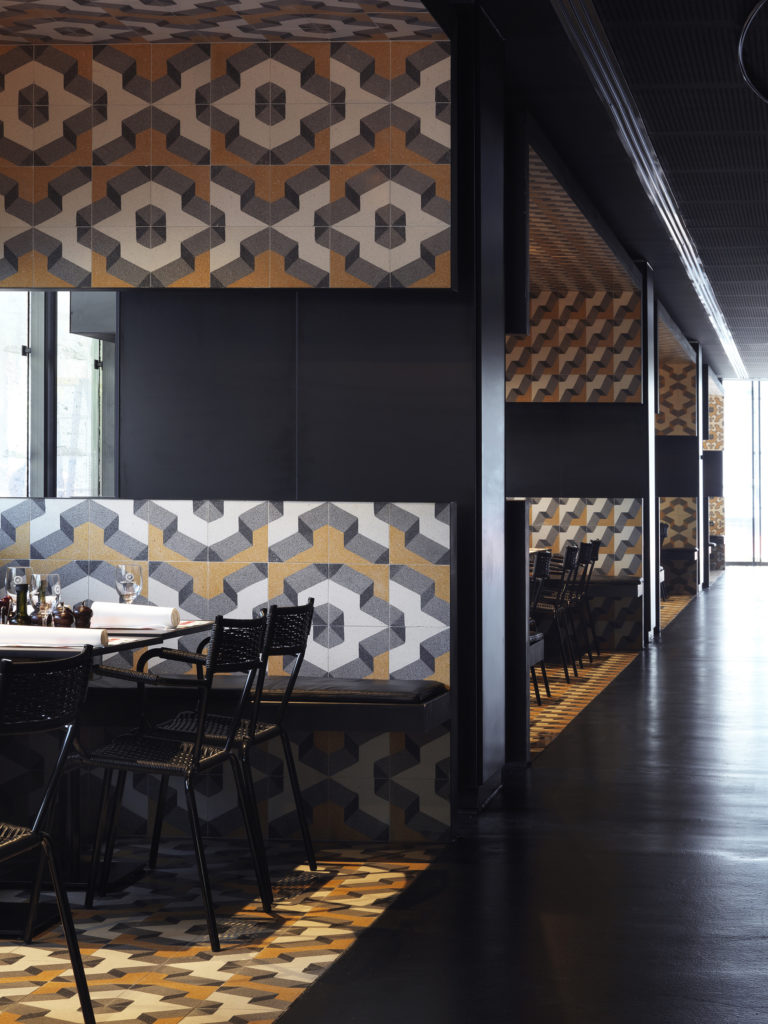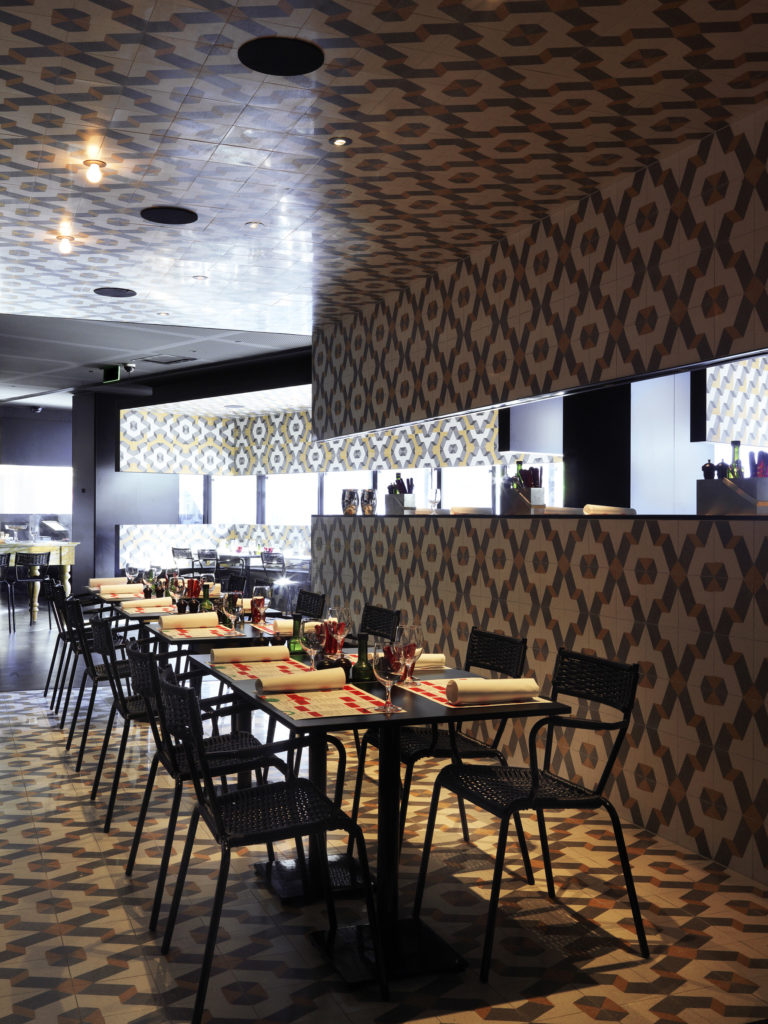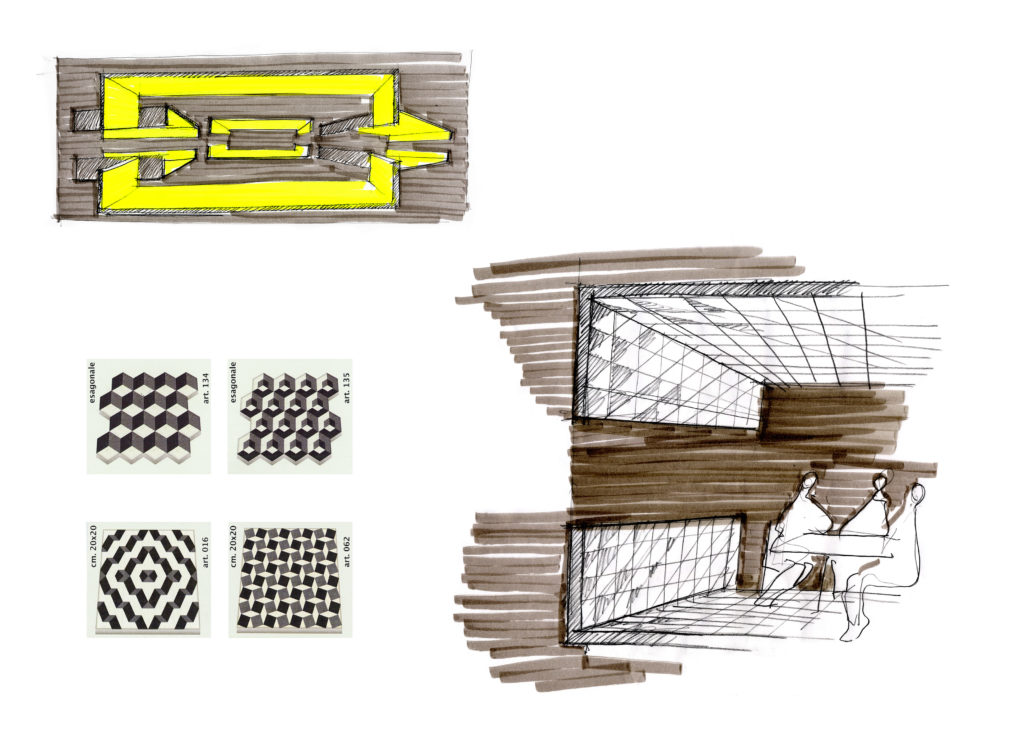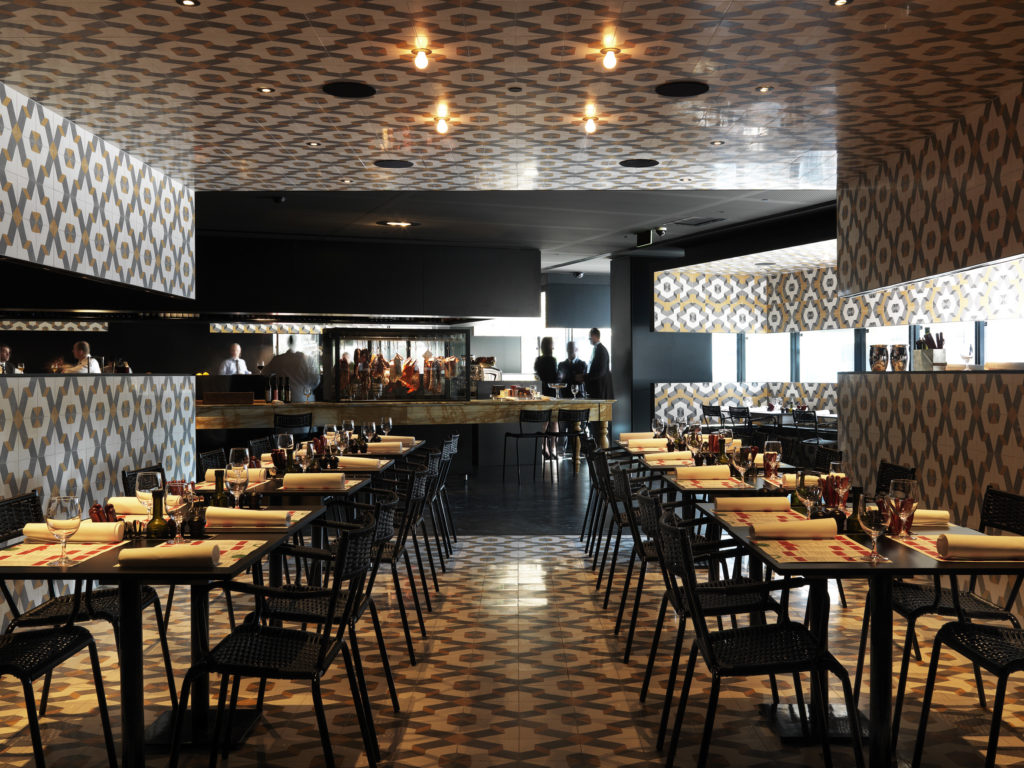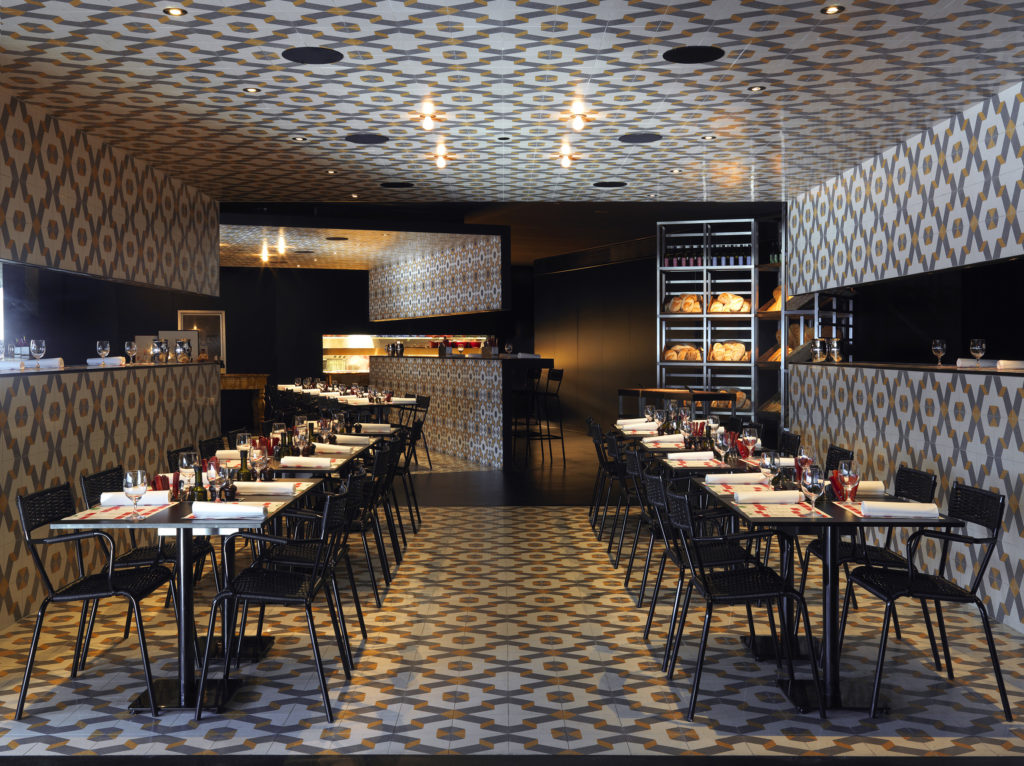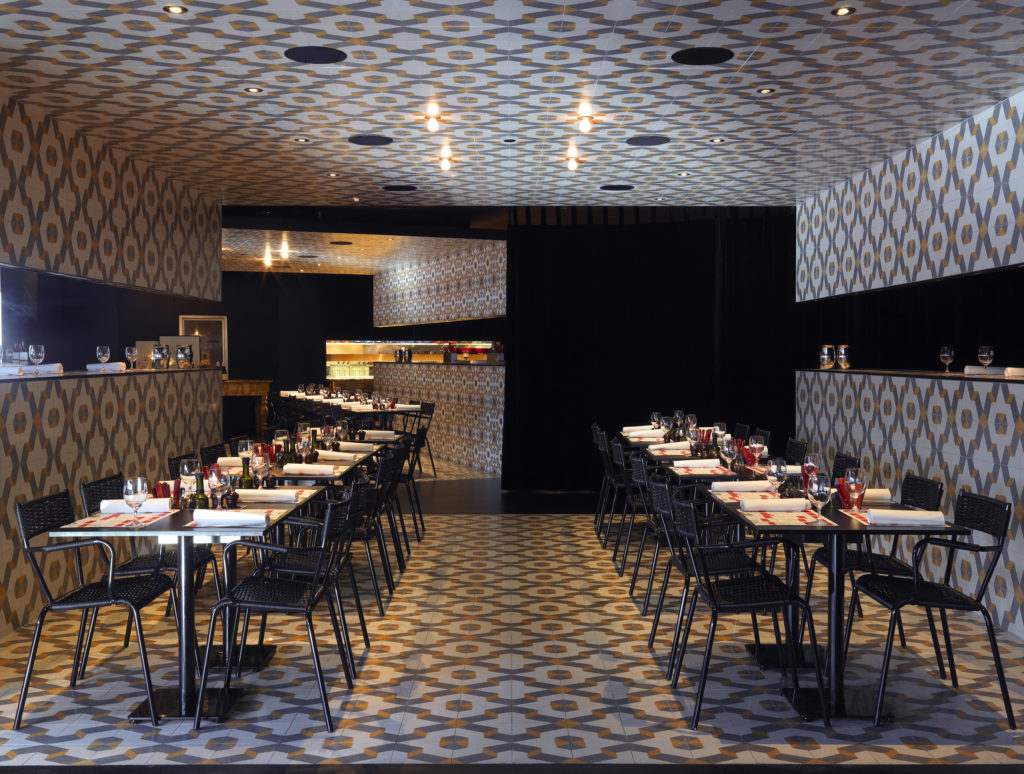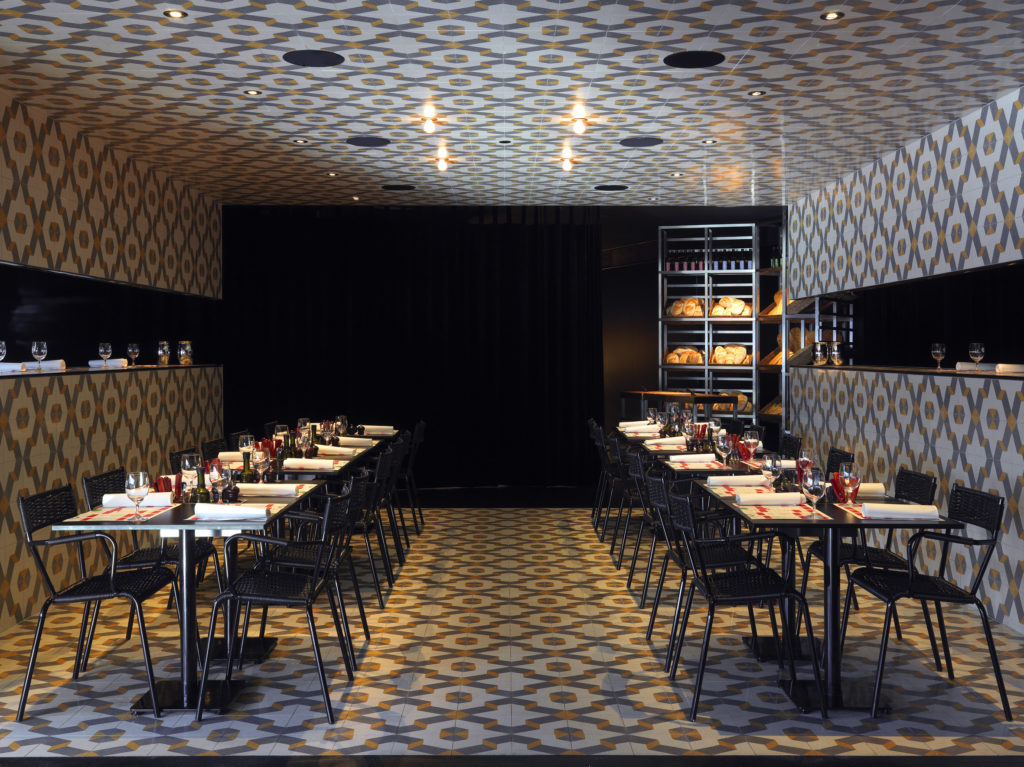GIUSEPPE ARNALDO & SONS RESTAURANT IN MELBOURNE
Australia [2007-2008]
LPA Collaborators: Barbara Fragale, Stéphane Boucher, Simone Lorenzoni
Photo Credits: Matteo Piazza
The concept behind the GAS Restaurant (Giuseppe Arnaldo & Sons) in Melbourne is inspired by the typical traits of Rome’s famous trattoria. The project was commissioned by the chef Robert Marchetti and the restaurateur Maurice Terzini, with whom the office has worked on many occasions. The references to Rome are already evident in the façade, composed of a sequence of adjustable panels in black steel and glass, etched with images of the Italian capital’s streets taken by Matteo Piazza. The windows, animated by full-scale images of the city’s inhabitants, generate a dialogue with passers-by, creating a play of references to real and imagined situations.
The exterior of the restaurant only partially hints at complexity of the interiors. The project divides the vast central dining space into small pods delimited by square steel profiles finished in handmade Sicilian ceramic tiles. Normally used for exteriors, the tiles are decontextualized, running along the floor, walls and ceiling of the tasting areas. These brightly coloured surfaces fold and wrap around the restaurant’s guests.
The desired scenographic effect is a perspectival amplification of space, resulting from the succession of intimate and gathered spaces for relaxing dinners and conversation, alternating with spaces where the staff ‘performs’ its duties. Examples include the cold cuts table in giallo di Siena marble and the two sculptural steel elements for pouring glasses of wine and displaying bread. These furnishings were conceived to create a series of mise-en-scène for the activities of the restaurant’s staff, treated like true stage sets.
The custom made furnishings testify to the attention focused on every aspect of the architectural design, down to the smallest detail. From the intelligent orchestration of natural and artificial lighting to the acoustics, graphics and staff uniforms, everything was studied to produce the idea of harmony and equilibrium between the parts that has become the hallmark of the office’s work.

